What does Star Wars symbolize? Fans have pored over the saga’s themes for decades, from religion and responsibility to fatherhood and family. Despite creator George Lucas once boiling it down to “don’t kill people, and be compassionate,” it’s still a fevered subject of debate among fans. As the franchise grows at its fastest rate under Disney’s stewardship, new stories will likely ask more questions of fans.
Whatever Star Wars symbolizes, it will struggle to compete with the complex system of iconography that’s been a part of the fictional universe since its beginning. Some symbols that originated in a galaxy far, far away have found their place in popular culture. The Force may have waxed and waned in the continuity over the years, but the branding has always been strong.
No matter which side of the universe — Rebels or Resistance, Empire or First Order — every faction understands the power of a good logo.
Understanding the symbols of the galaxy is essential. You don’t want to be jumping around the galaxy and accidentally wander into an Empire canteen or a Republic stronghold without knowing what you’re getting into.
Here’s how to find your way around – the ten Star Wars symbols you should know.
Rebel Alliance
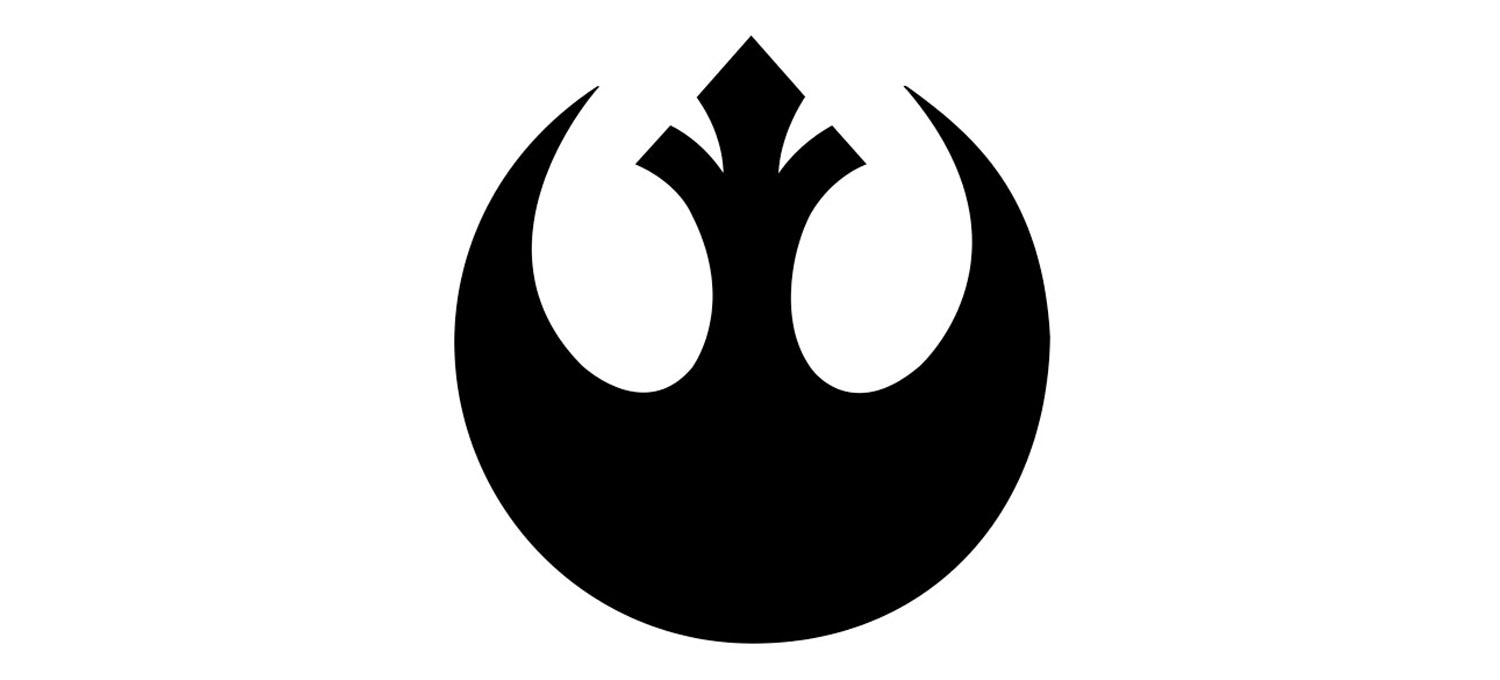
The symbol that made Imperial officers snigger until the first Death Star blew up. The Rebel Alliance united a mix of rebel cells and renegade senators in response to the Empire’s oppression of the galaxy. The alliance staged an attritional war, with a network of bases and many minor skirmishes that belied their unity. They scored major victories, especially the destruction of two Death Stars, and reconnected with the Jedi to achieve their aim of re-establishing the Galactic Republic.
Their crest was branded on most members’ uniforms, particularly Rebel pilots’ helmets. The distinctive Red Starbird would be adapted for the New Republic’s emblem and the crest of its successor, the Resistance, 30 years later. Current continuity states that the Starbird was formed by combining the signature of Mandalorian Sabine Wren and the symbol of partisan leader and rebel Saw Gerrera.
Galactic Empire

The Galactic Empire came to dominance through political scheming at the heart of the Galactic Republic Senate and the manipulation of the dark side of the Force. It was the master plan of Sheev Palpatine — secretly Darth Sidious — before he revealed himself and let his eyes shine red. The Empire was an impressive feat, with a strong Sith center of Emperor and his lieutenant Darth Vader, surrounded by a complex and highly equipped military organization. The Sith pursued power and domination, and there was no shortage of sycophantic officers ready to spread that control across the galaxy – even if they were oblivious to the Force.
As Emperor Palpatine kept a mockery of the Galactic Senate for many years, he adapted the Galactic Republic’s roundel — which had removed two of its eight spokes during the Clone Wars — for his new Imperial Crest. Everywhere the Empire went, the new six-spoked emblem was one of the first things people saw – on uniforms, flags, ships, bases, and propaganda. When it came to handovers of power and branding, Palpatine knew the power of familiarity.
New Republic
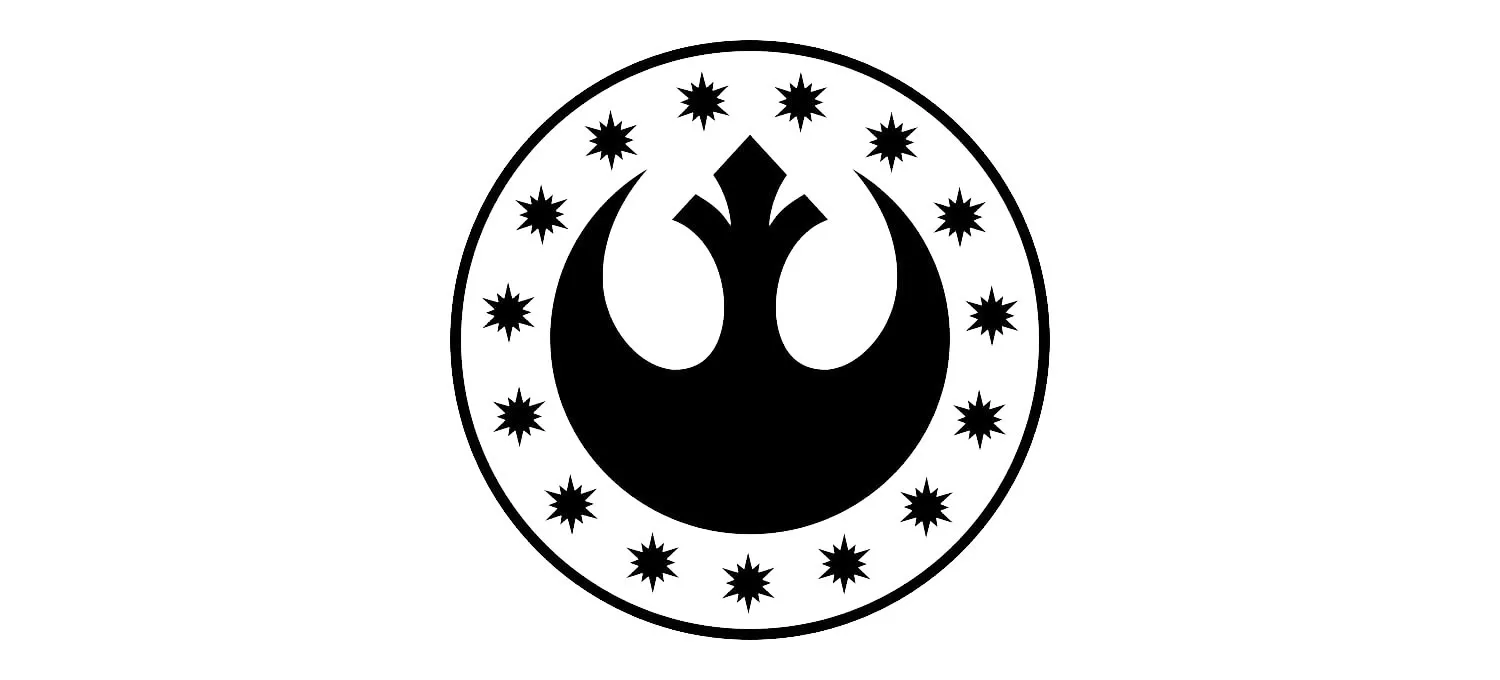
The New Republic began with some dancing Ewoks. With the destruction of the second Death Star near the moon of Endor, the Rebel Alliance began its painful transformation from underdog to government, replicating the Galactic Republic that came before while unraveling Palpatine’s New Order.
The New Republic was an interstellar democratic state like its predecessor, with its roots in the unity of different forces. In tribute to its hard-won existence, it put the Rebel Alliance symbol at the center of its emblem.
First Order
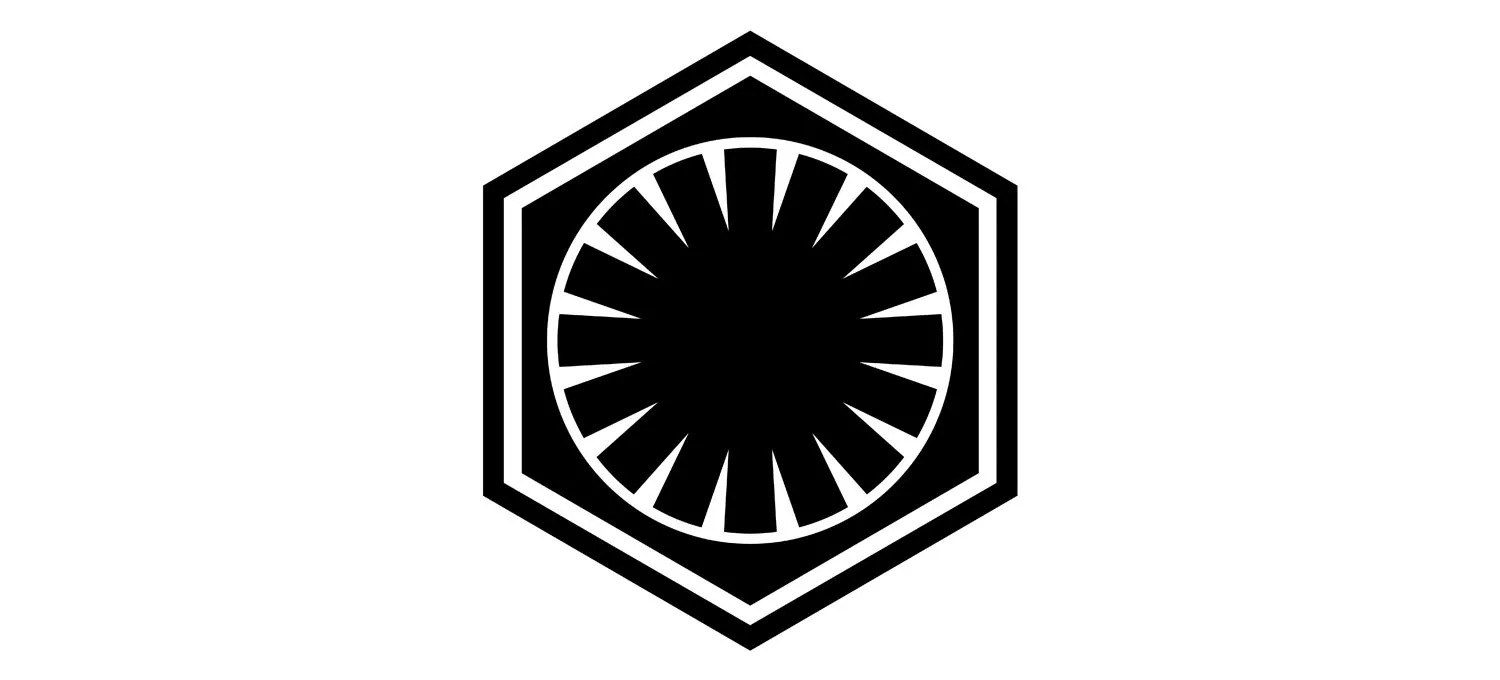
History repeated when Star Wars: The Force Awakens revealed a very familiar military dictatorship was seeking dominance of the galaxy 30 years after the Empire’s fall. The New Order core that had powered the Galactic Empire military struck back against the New Republic, but could never quite live up to its illustrious forbear, even when Emperor Palpatine’s involvement became clear.
Palpatine’s return in The Rise of Skywalker suggests his insidious eye for detail was all over the branding. The First Order insignia is intimidating, featuring a dial of 16 rays representing an explosion that can never be contained. It’s quite a statement.
Mandalorian Crest
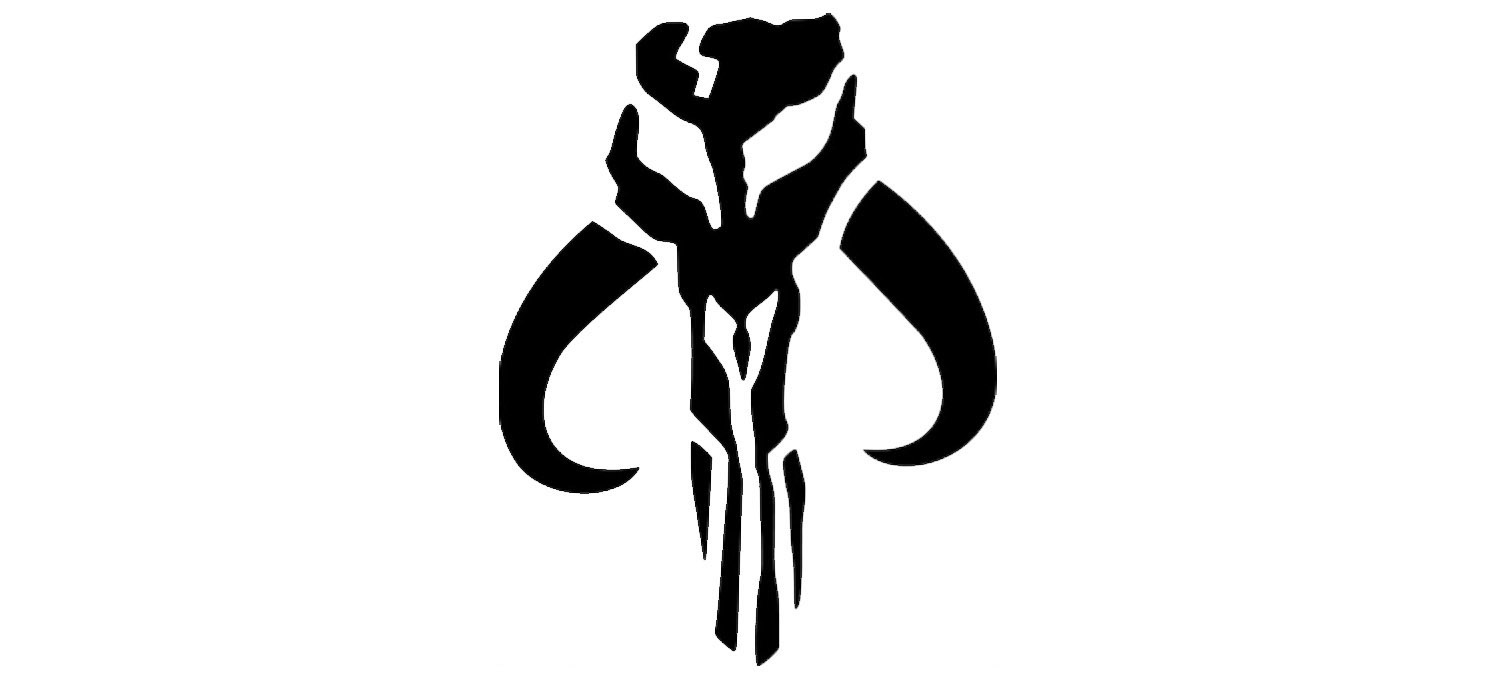
The brilliantly named mythosaurs were giant reptiles that stomped the world of Mandalore in the ancient past. Before their inexplicable extinction, they were tamed and ridden by early Mandalorian lords — so no wonder they became an emblem for the clan warriors’ power and prowess. The symbol even survived the cataclysm that ruined their planet and changed their way of life.
You may notice this distinctive skull motif on their body armor, including foundling Boba Fett – a link to the past and hope for the future. Legend has it that the Mythosaur will one day return, leading Mandalore to a new age.
Black Sun
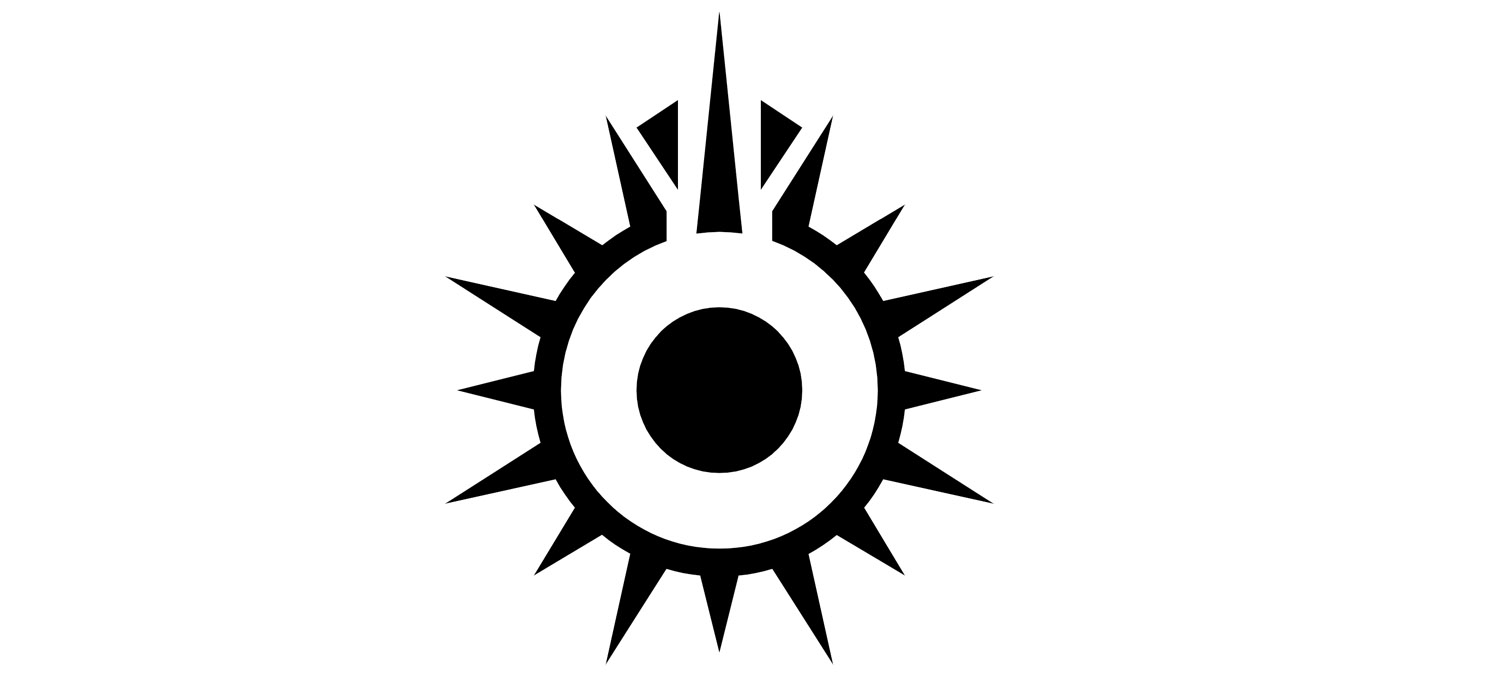
Black Sun was an influential criminal syndicate that became prominent during the Clone Wars when Jedi attention was elsewhere. As shown in The Clone Wars animated series, its links stretched to Sith Lord Maul and played its role in shaping the galaxy as the Empire emerged.
Although the Black Sun first appeared in the franchise in the multimedia Star Wars event Shadows of the Empire, The Clone Wars has confirmed its distinctive but self-explanatory emblem in canon.
Sith Eternal

Also known as the hex charm, this isn’t a symbol you want to see on your travels around the galaxy. Traditionally worn by Sith assassins, this emblem is most associated with the Sith fantasists of Exegol. Dedicated to the dark side of the Force and returning Darth Sidious to life and power, their arcane rituals betrayed their deep experimentation in the dark secrets of the Force.
The cult’s secret plans came to fruition during the ascendency of the First Order when Palpatine very nearly ruled the galaxy as Emperor once more. Sith Eternal officers in the First Order fleet could be recognized by sculpted metal dagger crests in their uniform hats.
Galactic Republic
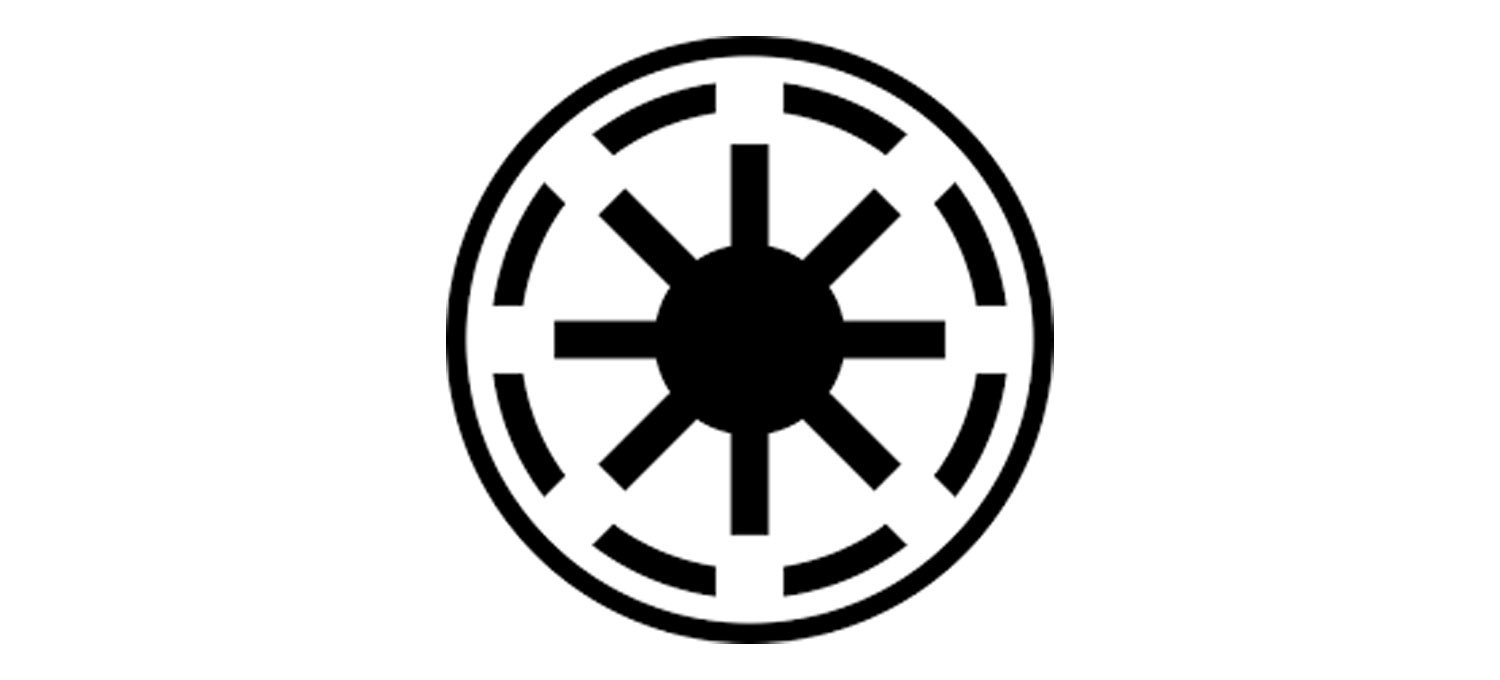
The Republic was the governing democracy that combined solar systems across the galaxy for over 20,000 years. It covered an enormous area and must have thought it had seen and survived it all before the Emperor dissolved it from the inside during the events of Star Wars: A New Hope. The Republic crest’s peak came during the Clone Wars, plastered everywhere, including military hardware, to present the image of a galaxy united under the Force. The Republic’s attempts to defeat separatists and Sith with the help of its old allies, the Jedi Order, failed when the Empire and his New Order reduced it to nothing.
For many centuries, the Galactic Republic’s emblem projected its unit. Fittingly, it was a simplified version of the ancient Dai Bendu emblem cog – a precursor to the Jedi that venerated the numerical balance of the benevolent Force in the universe.
Jedi Order
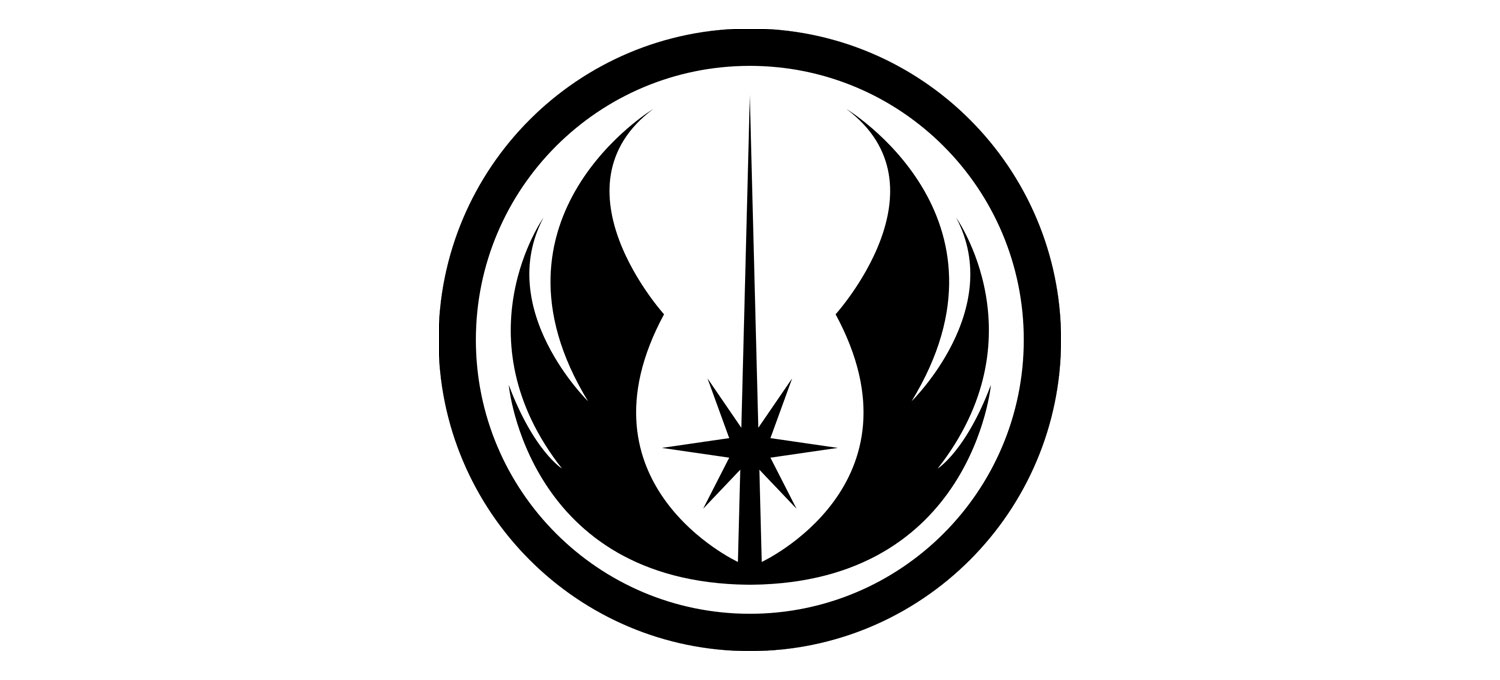
Working blade in hand with the Republic for millennia, the Jedi Order was more than their lightsaber-wielding muscle. The spiritual order of Jedi had existed for millennia before it was almost entirely swept away in the Empire’s rise to power.
A symbol of natural peace and justice, The Jedi Order’s aspirational crest resembled the emblem of the Old Republic. A wing blade of light suggested a sunrise, although the Jedi emblem’s center was unmistakably a lightsaber. Unsurprisingly, this emblem isn’t as familiar as others – naturally, it wasn’t emblazoned on Jedi robes. But it was a sign of darker times when Jedi sported it on their armor during the Clone Wars.
Sith Empire
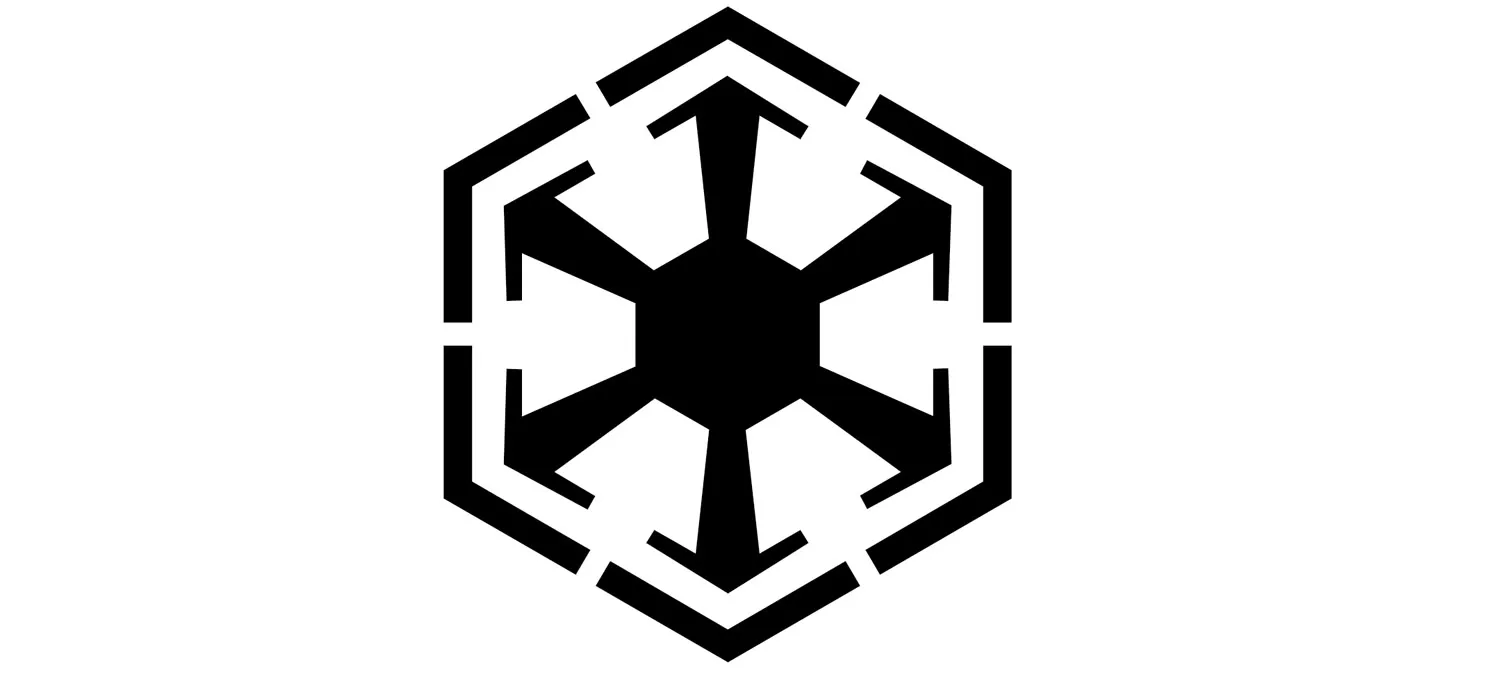
The Galactic Empire may have been the Sith’s greatest swoop for unlimited power, but it wasn’t the first time the dark side had tasted that level of control. The Reconstituted Sith Empire was a feudal Force-controlled territory covering thousands of dark and unknown star systems. It emerged after a succession of previous Sith Empires had collapsed during their ongoing struggle with the Old Republic, and the dark side had suffered dramatic losses in the vividly named Great Hyperspace War. The new Sith Empire demonstrated one of the dark side’s great skills: patience.
The Empire’s symbol was uncannily similar to the Galactic Republic it despised but drew equal inspiration from the Jedi precursor, the Dai Bendu. For differing reasons, the familiar motif shared by two enemies was a sure sign that the Force held far greater power and influence in the galaxy thousands of years before the Galactic Civil War stepped up a gear in A New Hope.

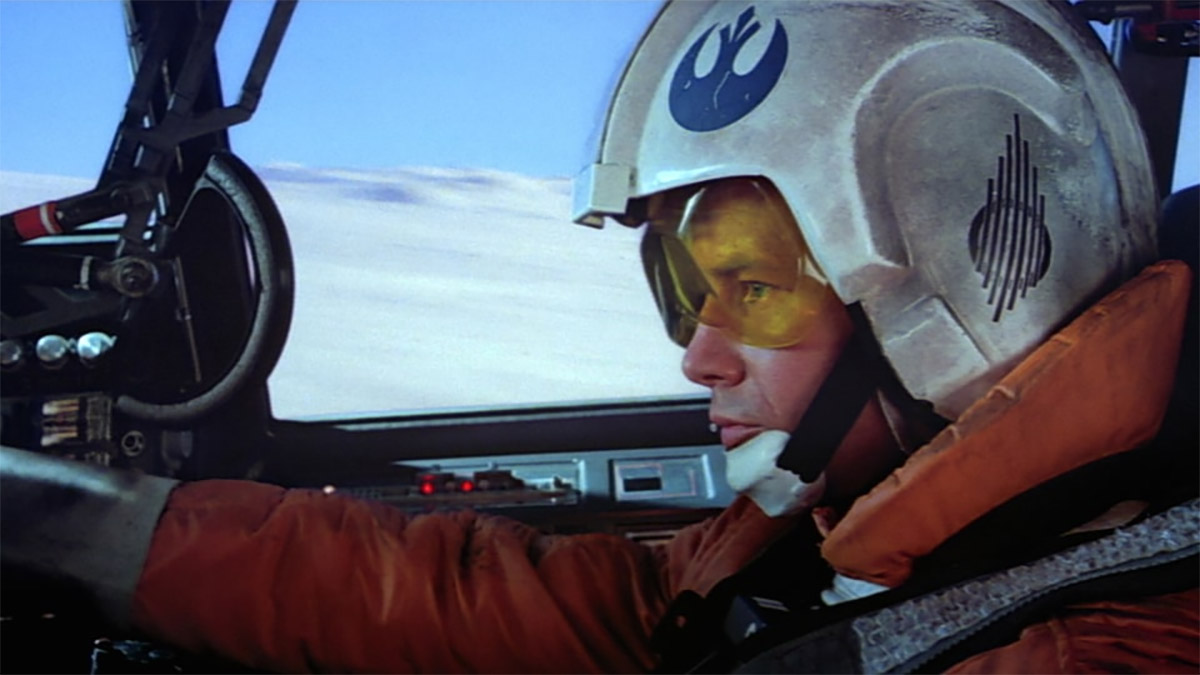









Published: Jul 12, 2022 02:28 pm